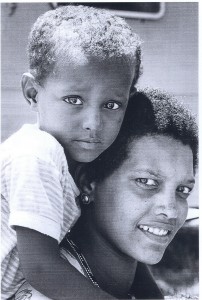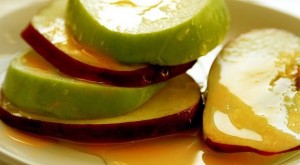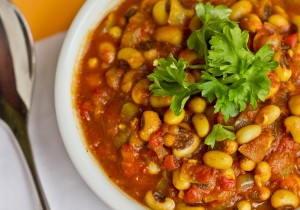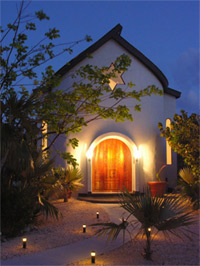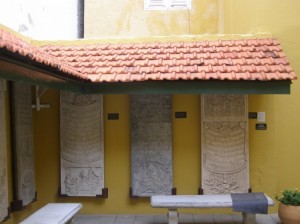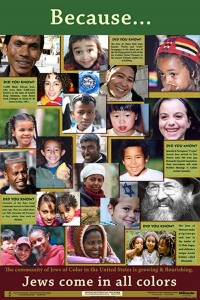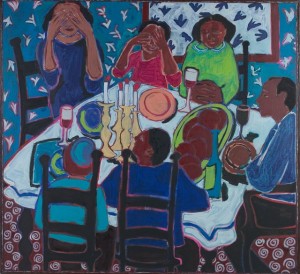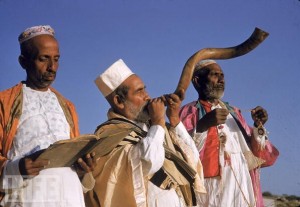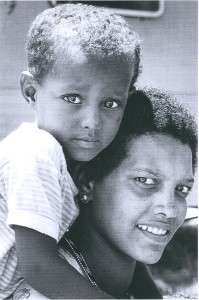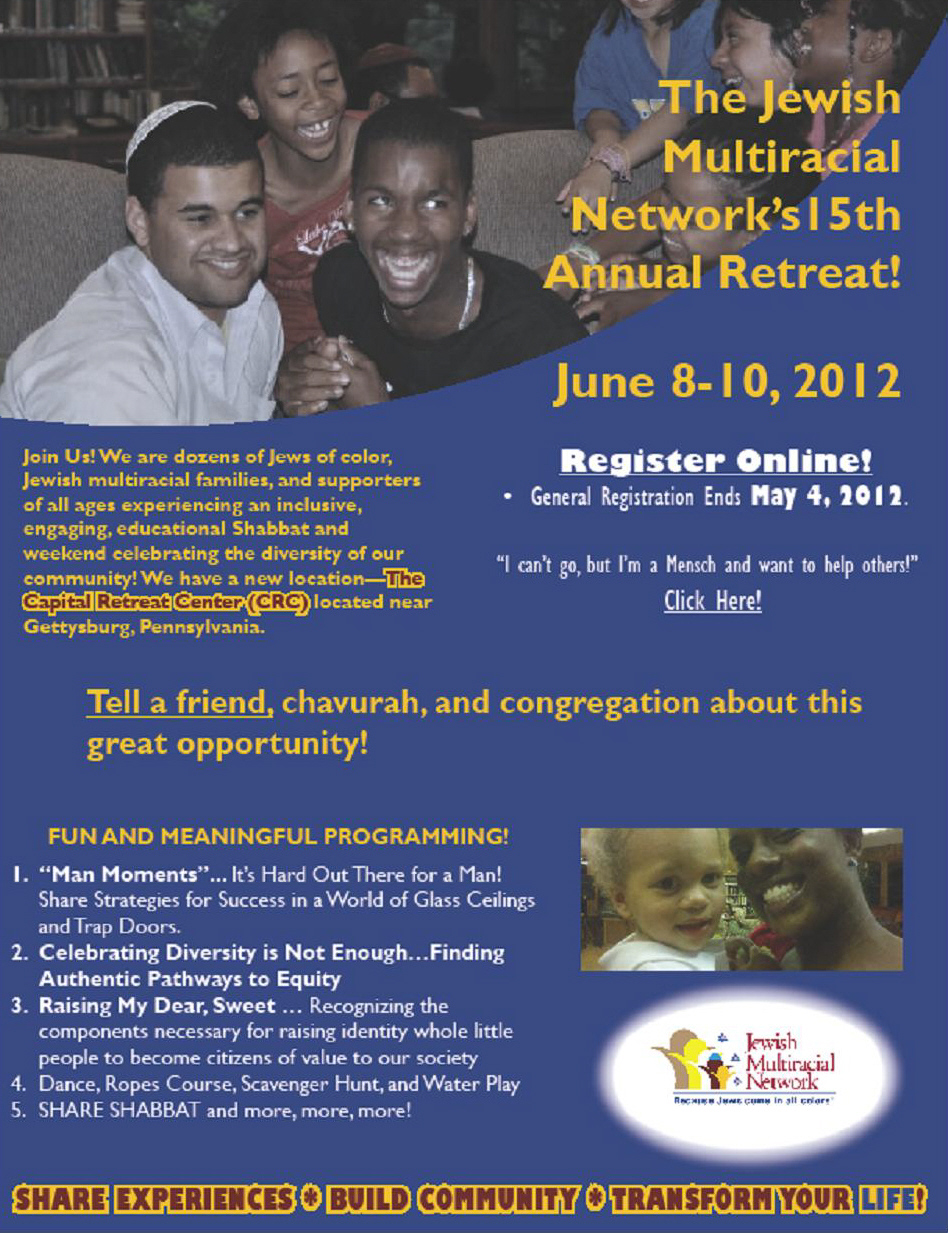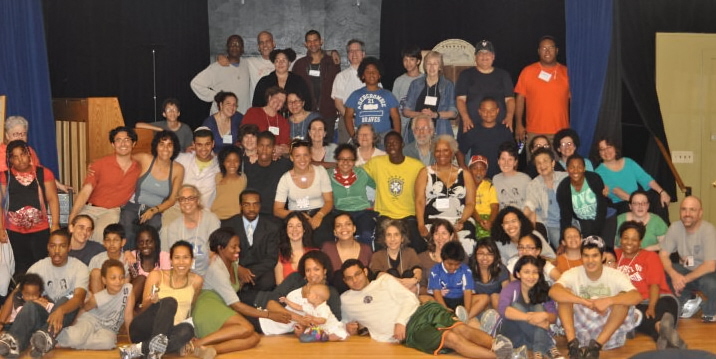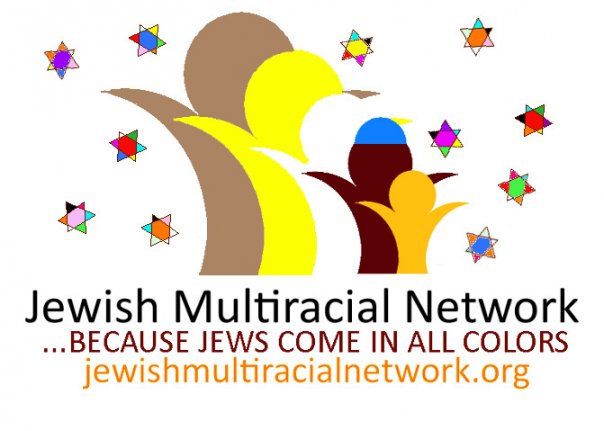Uncategorized
Kol Nidre ~ All Vows
Audio CD: Good Night Dear Lord, Kol Nidre, Johnny Mathis
Kol Nidre: Ve’esarei, Ush’vuei, Vacharamei, Vekonamei, Vekinusei, Vechinuyei.
D’indarna, Ud’ishtabana, Ud’acharimna, Ud’assarna Al nafshatana
Miyom Kippurim zeh, ad Yom Kippurim haba aleinu letovah
Bechulhon Icharatna vehon, Kulhon yehon sharan
Sh’vikin sh’vitin, betelin umevutalin, lo sheririn v’lo kayamin
Nidrana lo nidrei, V’essarana lo essarei
Ush’vuatana lo shevuot.
All Vows, prohibitions, oaths, consecrations, vows that we may vow, swear, consecrate, or prohibit upon ourselves- from this Yom Kippur until the next Yom Kippur, may it come upon us for good – regarding them all, we regret them henceforth. They will all be permitted, abandoned, cancelled, null and void, without power and without standing. Our vows shall not be valid vows; our prohibitions shall not be valid prohibitions; and our oaths shall not be valid oaths.
Kol Nidrei, meaning “All Vows,” are the opening words of a declaration recited by the prayer leader in the synagogue at the commencement of the Yom Kippur evening service. It states that all kinds of vows made before God unwittingly or rashly during the year (and hence not fulfilled) shall be considered null and void. Kol Nidrei, a very old declaration, is recited in Aramaic is recited in most congregations three times, and in Aramaic. During its recitation the ark is opened and two Torah scrolls are removed, one held on each side of the prayer leader.
Kol Nidre has an interesting history. It was composed during the sixth century when the Visagoth king of Spain ordered Jews to convert on pain of death. Kol Nidre was initially the anguished cry of those forced to commit apostasy. Thereafter, Spanish Jews sang it when they gathered in secret to celebrate Yom Kippur, as they did in the ninth century under Byzantine persecution, and again during the papal and Spanish inquisitions of thirteenth and fifteenth centuries.
The intense emotion and spiritual energy that can be generated by a Yom Kippur eve Kol Nidrei service is demonstrated by the story of the German Jewish philosopher, Franz Rosenzweig (1886-1929). Franz Rosensweig was a young Jewish philosopher in Germany before WW I. In order to receive an appointment at one of Germany’s most prestigious Universities, Rosensweig decided he would convert to Christianity. Religion in general, and Judaism in particular, held little interest for him. It served only to impede his professional advancement.
As the story goes, he was out for a stroll on the eve of his conversion to Christianity when he passed by a synagogue. It was Erev Yom Kippur and as he passed by the synagogue, he could hear the chant of Kol Nidre. He was riveted to the spot, unable to move. By the time the cantor reached the prayer’s conclusion, Rosensweig knew in his heart that he could never leave Judaism.
Hear Musical Traditions from East to West.
Days of Awe: An Idelsohn Society High Holidays 2010 Mixtape, and the release of Black Sabbath, the first compilation ever to showcase legendary African-American artists singing Jewish songs.
Johnny Mathis discusses singing Kol Nidre
Kol Nidre~ All Vows
Link: Musical Traditions From East to West
Yom Kippur is the only fast day decreed in the Bible. Abstaining from the pleasure of food is meant to improve one’s ability to focus on repentance. The Yom Kippur fast is a 24-hour fast that begins before sunset on the evening before Yom Kippur and ends after nightfall on the day of Yom Kippur.
~ May You Have An Easy Fast ~
And when you’re ready to break your fast, here’s a recipe for a delicious treat. You’ll want to use this recipe over and over again.
KUGEL is a famous Jewish dish, made especially by the Ashkenazi Jews of Eastern Europe. The word is Yiddish for ball, but it is sometimes translated as pudding or casserole, and related to the German Gugelhupf. Evidence exists that the dish was made over 800 years ago, though it has gradually been modified and improved upon over time. Many are used to thinking of kugel as a dessert, and you will certainly find lots of kugel dessert recipes. It can also be made as an unsweet savory side dish or entrée using different types of cheeses, mushrooms, etc. Kugels are a mainstay of festive meals in Ashkenazi Jewish (Jews of Eastern European descent) homes, particularly on the Jewish Sabbath and other Jewish holidays.

Sweet “Light and Fluffy” Kugel
16 oz Wide Egg Noodles
2-8oz bars of cream cheese (room temperature)
1 cup sugar
1 pint sour cream
1 teaspoon cinnamon
2 teaspoons vanilla extract
1 teaspoon almond extract (optional-gives a slight marzipan flavor)
6 eggs
1 stick of butter, melted
1/2 cup raisins or my preference – golden raisins (optional)
Cook noodles following package instructions. Drain & set aside. In a (very) large bowl mix together all ingredients until cream cheese resembles cottage cheese. Add noodles. Mix well. Oil spray 9×13 inch pan or one of your choosing and pour in mixture. (Optional-sprinkle top lightly with cinnamon.) Bake @ 350 degrees F for at least one hour or until lightly golden brown and firm in the center.
I usually freeze 1/2 of the kugel for later use. I don’t know if it’s the same for you, but the last thing I need to do is gain additional pounds from nibbling on the luscious thing all week until it’s all gone. It can be prepared weeks in advance, baked, and frozen. It need not be thawed before going straight into a 350 degree oven for an hour. I recommend covering it with foil before re-heating it in the oven.
May all of us be listened to & embraced & welcomed & supported in the coming year!
Food For Thought: Differences Between Ashkenazi and Sephardi Rosh Hashanah Traditions
 ‘Girl with a Pomegranate’ by William-Adolphe Bouguereau (1825–1905) It’s that time again. Rosh Hashanah, like a smiling bride, tantalized our tongues with apples and honey, round challah with raisins, and hopes for a sweet new year.
‘Girl with a Pomegranate’ by William-Adolphe Bouguereau (1825–1905) It’s that time again. Rosh Hashanah, like a smiling bride, tantalized our tongues with apples and honey, round challah with raisins, and hopes for a sweet new year.
But did you know that not all Jews celebrate Rosh Hashanah this way? While apples and honey is an almost universal tradition these days, it stems from late medieval Ashkenazi roots. Likewise, the wellknown round challah, sweetened with raisins and dipped in honey, as well as lekach – Jewish honey cake – come to us fromthe Eastern European tradition.
Indeed, Israel is truly celebrated as the “Land of Milk and Honey” as Ashkenazim serve disk-shaped sweetened carrots cooked with sugar, raisins or prunes, reminiscent of gold coins.
As for the apple, according to the Vilna Gaon of 18th century Lithuania, it is to remind us of Jacob, who smelled like the field, in contrast to Esau’s blooddrenched odor, when he received his father Isaac’s blessing.
Honey drips with sweetness, pollinating new beginnings in contrast to salt’s sharp sting. Meanwhile, the second night of Rosh Hashanah greeted us with new fruit.
Pomegranates are not taken for granted either. These sweet grenades of flavor so yearned for by the Israelites when they wandered in the desert, promised by Moses to be returned to them when they made it to Eretz Yisrael, are truly savored by Sephardic Jews on this Holy Day.
The fruit’s crown is reminiscent of the Lord’s Kingship, while the seeds symbolize the Torah’s 613 mitzvot. This “grained apple” is thought by some to be the fruit in the Garden of Eden, while for others it conjures up poetic images from the Song of Songs of spiced wines and flowering orchards.
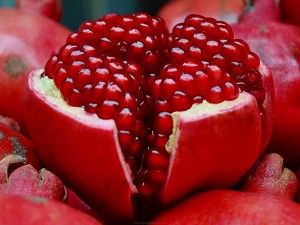 Just as this fruit is abundantly filled with seeds, so Sephardic Jews pray to Hashem that their lives might be filled with peace and prosperity, a bouquet of mitzvot garnishing their every day.
Just as this fruit is abundantly filled with seeds, so Sephardic Jews pray to Hashem that their lives might be filled with peace and prosperity, a bouquet of mitzvot garnishing their every day.
Sephardim, along with the Mizrachi Jews of the Middle East, practice a special mystical tradition – the Rosh Hashanah Seder, which according to some sources goes back more than 2,000 years. This Seder includes symbolic foods, many of which are based on puns or “signs.” Dates, green beans, pumpkins, leeks, beets, an apple compote called “mansanada,” and the head of a fish are presented alongside the pomegranate on a round dish, representing the wholeness of life.
Like many things in life, whether or not we do something often comes down to the weather. The main differences between traditional Ashkenazi dishes, coming from Russia and Eastern Europe, and those of Sephardi Jewry, with its Spanish, Italian and North African flavors, can be attributed to each culture’s differing climate.
Ashkenazi Jews contended with both poor agricultural conditions as well as a frigid climate, and so their more isolated shtetl existence became rooted in vegetables, poultry and simple meat dishes. The Rosh Hashanah meal thereby took on these hearty attributes, gefilte fish and kreplach – dumplings filled with meat or potatoes – consistently appearing on the dinner table.
In contrast, Sephardic cuisine is typically lighter, substituting rice or couscous for the starchy potatoes, partnered with fresh fruit. Also included are foods unknown to the Jews of Eastern Europe such as: spinach, artichokes, pine nuts, and squash. Jewish merchants traveled to the Iberian peninsula carrying with them unique spices from across the Mediterranean. Intoxicating aromas and exotic flavors, along with drizzling olive oil, combined to both soothe and stimulate the palate.
A typical Sephardic Rosh Hashanah Seder is replete with such foods, each representing the wishes and hopes of its participants in its own way.
Black-eyed peas and fenugreek are stewed with veal to make a dish known as lubiya. The Aramaic “ruvia” meaning “many” or “increasing,” celebrants hope that through prayer and consumption of these vegetables God will “increase their merits” in the coming year.
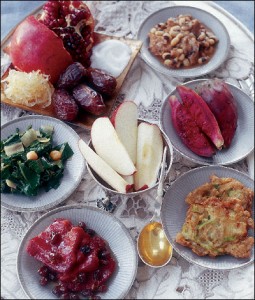 Moroccan couscous with seven vegetables is another often-found Seder dish. Each grain is said to represent a blessing or mitzvah, which they could hope to experience, while the number seven is considered good luck and recalls the cosmic act of Creation. Candied quinces are eaten alongside the Shehecheyanu prayer in Morocco.
Moroccan couscous with seven vegetables is another often-found Seder dish. Each grain is said to represent a blessing or mitzvah, which they could hope to experience, while the number seven is considered good luck and recalls the cosmic act of Creation. Candied quinces are eaten alongside the Shehecheyanu prayer in Morocco.
Sephardim also eat leeks, beets and dates, each of which carries its own mystical meaning. Meanwhile, the head of a fish is often used as a substitute for the ancient tradition of presenting a baked ram’s head on the dinner table – a reminder of Abraham’s sacrifice of a ram rather than his first-born son.
The fish’s head represents the desire that we may be leaders not followers, “the head and not the tail.” Fish have a long history of being considered a good symbol in the Jewish tradition, representing fertility as well as prosperity. Also, as fish do not sleep, likewise we are to be “constantly awake” in our desire to be holy.
Some Sephardim, however, avoid fish, thinking it fishy that the Hebrew word “dag” sounds an awful lot like “daagah,” meaning to worry, hoping to minimize their chances of having to worry about worries in the coming new year.
Nuts – “egoz”– are also to be avoided, not because they are lacking, nor for some other egoistic purpose, but rather because the gematria i.e. the numerical value of the Hebrew letters, is similar to that of “chet”- the Hebrew word for “sin.”
Surely, it would be sinful to single out only one such food to avoid, and so we see that some Sephardim also do away with honey. Instead, they dip their traditional flatbread into sugar. The reason? Honey was thought to make the incense in the Temple “impure.”
Today, one may experience dishes such as leek patties, whitefish salad, and pumpkin turnovers, all of which display their Sephardic heritage, while modern-oriented Ashkenazim can enjoy carrot and apple soup, teriyaki salmon, or a decadent slice of honey cheesecake. Kosher creations from roasted lamb to home-made baked beans, red cabbage salad, and fresh figs ensure the holiday to be a truly festive occasion.
Tapuchim u’dvash*
A sweet treat we love to eat
To start a new year
“May it be Your Will That Our Merits Increase Like The Black-Eyed Peas.”
1/2 pound dried black-eyed peas, or 3-4 cups frozen black-eyed peas cooked according to directions on package
5 cups water 1 tablespoon tomato paste
3/4 teaspoon ground coriander
1/2 teaspoon ground cumin
1/2 teaspoon paprika salt and pepper and cayenne pepper
1 tablespoon olive oil
1 large chopped onion
2 tablespoons chopped cilantro
To prepare the peas: pick them over, getting rid of any pebbles and broken or discolored peas. Soak them 8 hours or overnight in water to cover; or put them in a saucepan with a quart of water, bring to boil, boil uncovered 2 minutes, remove from heat, cover and let stand one hour. Drain and rinse the peas. Put them into a medium saucepan and add the water. Bring to a simmer, cover, and cook about 1 1/2 hours (or until tender) over low heat. Drain the peas, reserving 1/4 cup cooking liquid. (I’d reserve more to be on the safe side; this doesn’t seem like enough to me.) Put drained peas into a medium saucepan. Mix the reserved cooking liquid with the tomato paste and add it to the pot. Add the coriander, cumin, paprika, salt, pepper and cayenne pepper. Bring to a simmer and remove from heat. In a heavy skillet, heat the olive oil, add the onion, and saute over medium head, stirring often, about five minutes. (She uses a non-stick skillet; you might need more oil with a regular skillet.) When the onion begins to brown, add a tablespoon of water and saute until the onion is deeply browned. Then add the onion to the pea pot, cover, and gently heat for five minutes. Add half the cilantro. Taste and adjust seasoning. Serve it sprinkled with the other half the cilantro. Beth Greenfeld.
Rosh Hashanah Egyptian Black-Eyed Peas by Diane Kaufman-Tobin
Ingredients:
1 onion, chopped
3 tablespoons sunflower oil
2 garlic cloves, minced or crushed in a press
1.5 lb (750g) lamb or veal, cubed (optional)
1 lb (500g) tomatoes, peeled and chopped
3 tablespoons tomato paste
1 lb (500g) dried black-eyed peas, soaked for 1 hour
1 teaspoon cinnamon
1/2 teaspoon allspice
Salt and pepper
1-2 teaspoons sugar
Directions:
Fry the onion in the oil till golden. Add the garlic, and when aroma rises add the meat. Stir to brown it all over. Add the tomatoes and tomato paste. Drain the black-eyed peas, and simmer on fresh water for 15 minutes, then drain and add them to the meat. Add cinnamon and allspice and cook for 2 hours, adding salt and pepper to taste and the sugar after about 1 hour.
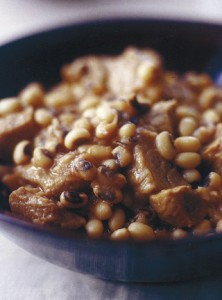
Quentin Bacon, Photographer:
New Year’s Table: A tradition for Syrian Jews and those from the American South. Recipes: ‘Aromas of Aleppo’
At Rosh Hashanah, Black-eyed Peas for Good Fortune
A Google search linking black-eyed peas and Jews reveals a wide discussion about the Jewish roots of the popular hip-hop band (sadly, none) and a riff on Lenny Bruce’s Jewish vs. goyish shtick that peas are Jewish while black-eyed ones are goyish.
But black-eyed peas are Jewish. Jews from both Syria and the American South eat them as part of a celebratory meal on Rosh Hashanah.
One tradition dates back to a 2,500-year-old text and the other crops up in the mid 20th century. Could the two be connected?
The peas — actually beans from the cowpea family — are white with a small black circle, or “eye,” near the base. Indigenous to West Africa, Ethiopia or the Far East (depending on your source), they made their way to Judea at least 500 years before the Common Era and were brought to America by slaves in the 17th century. When cooked alone they are relatively bland; however, being easy to grow and high in protein and carbohydrates makes them an inexpensive staple in Southern states and in the Middle East, though not much of a holiday treat.
Poopa Dweck, author of “Aromas of Aleppo” (HarperCollins, 2007), explains in her book that Syrian Jewish families begin the New Year with a Seder, a ceremony before a Rosh Hashanah meal. “The foods of the New Year holiday symbolize a wish for a sweet year. Aleppian Jews eat several symbolic foods during the Rosh Hashanah dinner… that correspond to the wishes of the Jewish people for the coming year,” she writes.
The tradition comes from the Babylonian Talmud, which states, “Abaye said, ‘Now that you have said that an omen is significant, at the beginning of each year, each person should accustom himself to eat gourds, black-eyed peas, fenugreek….” Each of the foods (nine in total) represents something different for the year ahead; the black-eyed peas symbolize good fortune. For a Syrian meal, they’re traditionally prepared in a simple recipe with garlic, onions and veal. The dish can be spiced up with cinnamon and allspice or flavored with tomatoes or tomato paste.
The dish symbolizes prosperity in ways: A single serving contains so many of the small beans and the dish’s name pays homage to abundance. Black-eyed peas are rubiyah (in Aramaic and Hebrew) or lubiya (in Arabic), which are cognates of the Hebrew words harbeh, meaning many, and l’harabot, to increase. The idea is to take in prosperity at the start of the year, with the hope that it will serve as a good omen for the year ahead. While the Syrian Jewish community is the only one to eat the beans in a Seder Rosh Hashanah, other Sephardic communities have adopted the tradition of the Rosh Hashanah beans.
This culinary tradition likely arrived in America with Sephardic Jews who moved to the South in the 18th century. Many Jews of the South had black cooks, who prepared a combination of what their Jewish owners or bosses requested and dishes from their own culinary traditions. In the case of black-eyed peas, those traditions overlapped, both groups having their own preparations of the beans. Though the two black-eyed pea traditions intersected in the early South, they didn’t meld into one; nor did one seem to rub off on the other.
Around the same time, the tradition of eating black-eyed peas January 1, still widely popular in the American South, was crystallizing in the surrounding non-Jewish communities. Hoppin’ John, a dish made with black-eyed peas, rice and pork, is eaten to obtain a prosperous year. It’s served in a meal alongside greens whose leaves symbolize paper money, thus wealth.
The sources of both the dish’s name and its symbolism have become the province of legend and lore. Some argue that the beans represent coins, while others argue that because they expand while cooking, they represent abundance. Southern food historian John Taylor explains that the combination of rice and beans in the dish came “with the enslaved” from Africa, while the tradition of eating them on “New Year’s probably came from the Caribbean, where they prepare a similar dish called Moros y Cristianos (Moors and Christians).”
The first recipe on record for the dish in the South is in “The Carolina Housewife,” from 1847, one of the nation’s earliest cookbooks. It’s likely, however, that the dish was prepared much earlier, particularly since its roots are in slave culinary traditions, which were maintained orally. Over time, the dish was adopted by white Southerners for whom the slaves cooked, and was incorporated into the greater Southern culinary canon, particularly of the low country in the Carolinas and parts of Virginia and Georgia.
More than 150 years later, the dish not only appears in households on secular New Year’s Day, but also in kosher variations on tables of Jewish families in the South celebrating the Jewish New Year. Jewish recipes (found in Sisterhood cookbooks from the South) often replace the pork with a smoked turkey leg, but there are also vegetarian preparations.
Marcie Cohen Ferris, author of “Matzoh Ball Gumbo” (University of North Carolina Press, 2005), explains that the tradition started in the 1960s: “On holidays, people cook traditionally, but there’s a group of people who like to add in regional flavors to give it a signature of place. What could be more of a symbolic dish than to grab that dish from the secular New Year’s and claim it for Rosh Hashanah?”
Ironically, it is by adopting this African-Caribbean-Southern-Christian tradition (possibly inflected by local Sephardim) that the Jews of the South are reclaiming and reconnecting to a Jewish tradition that dates back more than 2,000 years. by DevraFerst, The Jewish Daily Forward
L’shanah Tovah Tikatev V’taihatem!
May you be inscribed and sealed for a good year!
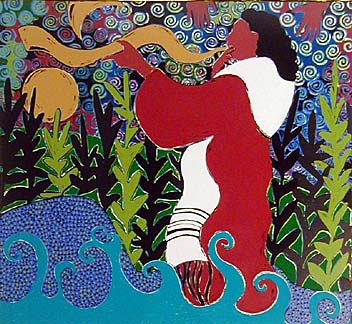 Artist: Lynn Feldman ~ Serigraph: She Blew the Shofar
Artist: Lynn Feldman ~ Serigraph: She Blew the Shofar
Now facing extinction, the Sephardic Jewish community of the Caribbean was once so influential that it helped fuel the success of the American Revolution and finance the first synagogues in the United States, located in New York City and Rhode Island. The Jews of the Caribbean project brings to light this little known and quickly disappearing 520 year-old history of the oldest Jewish communities and Synagogues in the Western Hemisphere.
After Columbus’ expedition in 1492, the West Indies became a place of salvation for Sephardic Jews fleeing the Spanish and Portuguese Inquisitions. La Nación, as these Jews were called, were fundamental in shaping the early Caribbean economy through their unique knowledge of sugar cane, agriculture, and an expansive network of trade. Jews also joined the pirates controlling the Caribbean seas, and later became influential politicians, substantial landowners, and bankers to the American colonies. While creating financial success for the European powers, the Sephardic Jews managed to keep their culture, religion, and customs alive – which lead to the continuation and support of Judaism throughout the Americas.
Through thought-provoking photographs of the remaining synagogues, cemeteries, and historic homes and artifacts in Jamaica, Barbados, Curaçao, Nevis, St. Thomas, St. Croix, St. Eustatius, and Suriname – the world can witness the legacy of Judaism in the new world and a rarely explored facet of Caribbean history. These endangered remaining monuments, dating back to 1654, are the oldest synagogues and Jewish cemeteries in the Western hemisphere and beautifully exemplify the strength of the Jewish people as well as the surprisingly diverse culture of the Caribbean.
Once home to thousands of Sephardic Jews, these historic communities now face extinction. Only 5 synagogues remain and almost half of the original cemeteries are either falling apart, or have been lost to natural disasters and pollution from nearby oil refineries. The few historic landmarks still in use are little known gems of the Caribbean and invaluable landmarks in the Jewish history of survival. Harry Ezratty, author of 500 Years In The Jewish Caribbean writes: “Having revisited many of these historic sites, it is certain that these unique monuments of the Jewish people are in peril.”~From Jews of the Caribbean ~Wyatt Gallery
Aruba: Beth Israel
Bahamian Jewish Community: Luis De Torres Synagogue in Freeport
Barbadian Jewish Community: Nidhe Israel Synagogue
The Jewish Community of the Cayman Islands
Cuban Jewish Community: Synagogues & Congregations
Curacao Jewish Community: Mikvé Israel-Emanuel
Beth HaMidrash HaSefaradí Nidhé Israel De la República Dominicana
Jewish Jamaica
Aruba Jewish Community
Bahamian Jewish Community
Barbadian Jewish Community
Cayman Islands Jewish Community
Cuban Jewish Community
Curacao Jewish Community
Dominican Republic Jewish Community
Guadeloupan Jewish Community
Jamaican Jewish Community
Martinique Jewish Community
Puerto Rican Jewish Community
St Kitts & Nevis Jewish Community
St Maarten/Martin Jewish Community
St Thomas Jewish Community
Trinidad & Tobago Jewish Community
Virgin Islands Jewish Community
Recipe: Fried Bake ‘n Fish from TriniGourmet.com
…Because Jews Come in All Colors
10 Tips Toward Racial & Cultural Sensitivity in the Jewish Community
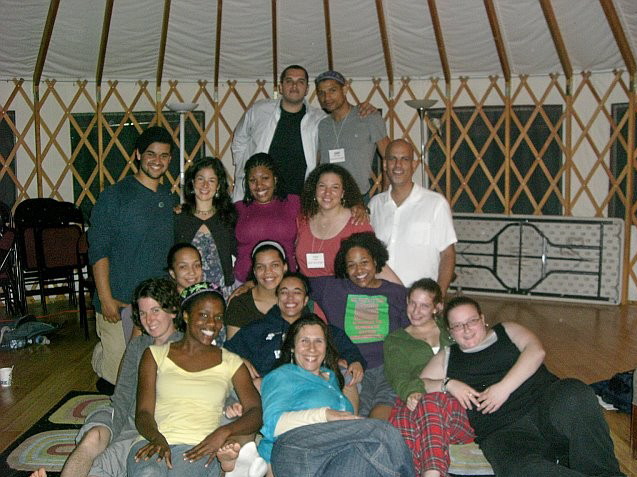
Ahhh, feel the love. The crew at the Jewish Multiracial Network Retreat
10 Tips Toward Racial & Cultural Sensitivity in the Jewish Community
1 ~ Reach out to other Jews across difference because you will find our commonalities exceed our differences by far.
2 ~ Do not assume that Jewish history and the current Jewish population is comprised most significantly of Jews of European culture ancestry.
3 ~ Consider that within the customs and traditions of the Jewish people, there is a great diversity of language, culture, custom and color. Be willing to reach for and stay connected to the diversity of the Jewish people.
4 ~ Do not assume that because a person has dark skin that they must be a convert. This is not necessarily true or fair to individuals that have been Jewish all of their lives.
5 ~ Learn to value the “inner” Jew in yourself so that you can better appreciate it in others.
6 ~ Get to know the customs and traditions of Jews from the Middle East and North Africa and welcome this knowledge as a necessary component of your Jewish education.
7 ~ If you find a person’s journey around difference to be inspiring, be it their color, background, abilities, culture, traditions, etc., try not to limit your praise of them to their being “inspiring”. Tell them what about them inspires you specifically.
8 ~ Remember that it’s o.k. to be curious, but to become fascinated with a person because of an aspect of their physicality ALONE, is to turn that person into an object in your regard. Make efforts to make your relationships with people who are different than you, more than skin deep.
9 ~ Keep in mind that Jews of Color have a lot to offer the Jewish community, both in experience and perspective and should be welcomed to participate in all levels of Jewish social interaction, including leadership.
10 ~ Remember that denial is not just a river in Egypt (smile), it can also be an obstacle toward finding lasting solutions. When we sit with the things inside us that make us the most uncomfortable, we often find deeper truth and growth on the other side. ~Courtesy of Ayecha
http://www.ayecha.org/
“The world in which you were born is just one model of reality. Other cultures are not failed attempts at being you; they are unique manifestations of the human spirit.”~Wade Davis
“Because Jews Come in All Colors” poster celebrates racial and ethnic diversity in the Jewish community.
In Text Boxes:
DID YOU KNOW?
The Jews of China built their famous “Purity and Truth” Synagogue in the third year of the Da Ding period (1163) of the Jin (Golden Tartar) Dynasty, in the ancient Chinese capitol city of Kaifeng.
DID YOU KNOW?
15,000 Black African Jews, who trace their 3,000-year history to the time of Israel’s King Solomon, were flown from Ethiopia to Israel in 36 hours in May 1991.
DID YOU KNOW?
Spanish & Portuguese “Crypto” (secret) Jews arrived in New Mexico some 500 years ago, fleeing the Spanish Inquisition. Their descendents still recite Shabbat blessings in Ladino (archaic Spanish).
DID YOU KNOW?
In India, the Bene Israel community – their ancestors arrived there 2,000 years ago – are called “Shanwar Telis” (Saturday Oil Pressers) as they refrain from work on the Shabbat.
DID YOU KNOW?
The Jews of Morocco make pilgrimage each year to the tombs of 13 Holy Sages, and celebrate a unique Jewish holiday called Mimunah.

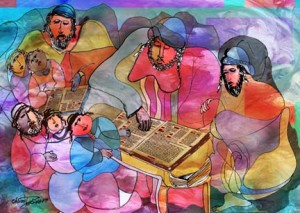 Torah Study by Artist, Lecturer, Musician Chaim Parchi
Torah Study by Artist, Lecturer, Musician Chaim Parchi
Who Are These Jews?
by Ruth Brin
There were women who sat in the market
selling beets and cabbages so their men could study:
They were Jews.
There were men of Yemen, great swordsmen,
guards of the king: they were Jews.
There are dark women of India, wearing saris,
Black farmers from Ethiopia, Children with slanted eyes:
All Jews.
There are dressmakers and sculptors, thieves
and philanthropists, scholars and nurses,
beggars and generals.
There are women who follow every rule of Kashrut and
men who know none of the rules, yet all of us are Jews.
Though we are not alike in mind or body,
somewhere in the depths of our souls
we know we are the children of one people.
We share history, a hope, and some prayers:
We speak many languages:
We have heard one Voice:
All of us stood together at Sinai
When our past and our future
Exploded in thunder and flame before us.
(Ruth F Brin z”l was famous for her Jewish poetry, prayer services, scholarly articles, children’s books and librettos. Her liturgy was found in the pages of Reconstructionist, Reform and Conservative prayer books around the country.)

King Abdulla Ibn Hussein of Transjordan sits under the watchful eyes of his Jewish bodyguards, Habanni Yemenite brothers Sayeed, Salaah, & Saadia Sofer (1922).
“The Jewish experience is built upon foundations of diversity as old as the Jewish people, a reality that may be lost to many Jews who tend to think of other Jews as being only like themselves. The historical home of the Jews lies at the geographic crossroads of Africa, Asia, and Europe. Jews are an amalgam of many peoples and Jewish origins include a multitude of languages, nations, tribes, and skin colors.” ~The History of Jewish Diversity/ Be’chol Lashon
I Love Jewish Faces by Debra Darvick
May All of Us Be Listened To & Embraced & Welcomed & Supported.
92nd Psalm: A Prayer for Shabbat by Stacey Zisook Robinson
And so we stand
On the edge of this week
Pebbles strewn at our feet
The distance between us an endless heartbeat
The difference like night
Like day
Like light and darkness
Like God
Who separates the days
And brings us
Ever and always
To this holy edge
To this Shabbat
Where we stand
Trembling with effort
Weary from a week filled with
Noise and action and movement
Restless and driven
From one moment to the next
Until we are brought to this edge
This endless and always edge
To this Shabbat
Sacred and at peace
We pause
We breathe
At rest
Separate
Together
With God
Together
With one another
In a flooding of gentle light
The rising of the sun
From one breath to the next
One heartbeat
We stand on the edge and cross into the infinite
As one
Into peace
Into Shabbat
G’mar Chatimah Tovah ~ May you be sealed for a good year in the Book of Life!
Eyal Bitton sings the beautiful & ancient Moroccan version of Kol Nidrei in a modern style.
Kol Nidrei, All vows,’ the opening words of the declaration, largely in Aramaic, at the beginning of the evening service on Yom Kippur in which all vows that will be uttered in the coming year are declared null and void. The declaration is restricted to those vows between man and G-d alone. According to Jewish doctrine, the sole purpose of this prayer is to give protection from divine punishment in case of violation of the vow. No vow, promise, or oath that concerns another person, a court of justice, or a community is implied in Kol Nidrei.
Listen to: Days of Awe: An Idelsohn Society High Holidays 2010 Mixtape, and the release of Black Sabbath, the first compilation ever to showcase legendary African-American artists singing Jewish songs.
Yom Kippur is the holiest day in the Jewish calendar. The observance is also known as the Day of Atonement since the events of Yom Kippur focus on asking and granting forgiveness for one’s transgressions. Yom Kippur falls at the end of the ten Days of Penitence which begin with Rosh Hashanah, the Day of Judgment. Prayers which emphasize cleansing of the soul are recited during the day services. Congregants mourning family members who died in the past year recite Yizkor prayers in which God’s forgiveness is asked for the deceased. The services ends with the blowing of the tekiah gedolah, a long blast on the Shofar and the congregation proclaims…
“Next Year Jerusalem!”
All over the world, am Yisrael chai,
All over the world, am Yisrael chai.
All over the world is where we live
And Israel lives in every Jewish heart.
From North and South and East and West to you we say “shalom.”
Yet always we know Israel is our home away from home.
May All Of Us Be Listened To & Embraced & Welcomed & Supported – In the coming year.
L’shana Tova!
The Jewish Multiracial Network advances Jewish diversity through community building and empowerment with Jewish people of Color and Jewish multiracial families.
Want more information? GO HERE!
Why the Jewish Multiracial Network?
The Jewish Multiracial Network (JMN) brings together Jews of Color and Jewish multiracial families and individuals to learn about and celebrate their Judaism. JMN is committed to diversity and inclusive community-building, and seek to help members strengthen their identities as Jews and members of other ethnic groups. JMN creates opportunities for learning, nurturing and support for a large and growing part of the Jewish community that often feels marginalized by mainstream Jewish organizations. You are invited to become a part of the Jewish Multiracial Network commUNITY.
Text Boxes:
DID YOU KNOW?
The Jews of China built their famous “Purity and Truth” Synagogue in the third year of the Da Ding period (1163) of the Jin (Golden Tartar) Dynasty, in the ancient Chinese capitol city of Kaifeng.
DID YOU KNOW?
15,000 Black African Jews, who trace their 3,000-year history to the time of Israel’s King Solomon, were flown from Ethiopia to Israel in 36 hours in May 1991.
DID YOU KNOW?
Spanish & Portuguese “Crypto” (secret) Jews arrived in New Mexico some 500 years ago, fleeing the Spanish Inquisition. Their descendents still recite Shabbat blessings in Ladino (archaic Spanish).
DID YOU KNOW?
In India, the Bene Israel community – their ancestors arrived there 2,000 years ago – are called “Shanwar Telis” (Saturday Oil Pressers) as they refrain from work on the Shabbat.
DID YOU KNOW?
The Jews of Morocco make pilgrimage each year to the tombs of 13 Holy Sages, and celebrate a unique Jewish holiday called Mimunah.
The community of Jews of Color in the United States is growing and flourishing!
A Tale of Conservation, Faith and a Surprising Survival
 AMID the bustle and crumbling masonry of downtown Yangon, there is one building that likes to keep up appearances: Myanmar’s only synagogue. On a narrow street, tucked behind a lot of paint shops, stands the splendid Musmeah Yeshua. Dating from the 1890s, it is a reminder of a lost world and an almost vanished community. It also provides a test of how far Myanmar can change.
AMID the bustle and crumbling masonry of downtown Yangon, there is one building that likes to keep up appearances: Myanmar’s only synagogue. On a narrow street, tucked behind a lot of paint shops, stands the splendid Musmeah Yeshua. Dating from the 1890s, it is a reminder of a lost world and an almost vanished community. It also provides a test of how far Myanmar can change.
Many of Myanmar’s Jews came from Iraq in the 19th century to trade and set up businesses. What was then Rangoon was a flourishing port of the British empire, and the Jewish community became influential. At its peak, it numbered around 3,000. The city even had a Jewish mayor.
Some of the prosperity and worldliness of those days lingers in the streets around the synagogue. Musmeah Yeshua is virtually next door to a Sunni madrassa, dating from 1914. A bit farther down the same street is a large mosque. Both of these are legacies of a Muslim influx from Gujarat, in India. Across the way is a large, gaudy Hindu temple. A few streets down is a large Hokkien temple. Methodist, Catholic and Anglican churches are all nearby. Immigrants came to Rangoon from around the world to make their fortunes.
A virtue, perhaps, of having been isolated from the world is that several decades of religious bigotry seem not to have touched this corner of Yangon. Living and working together, Jews, Muslims and others seem to get along cheerfully enough—in contrast to the violence between the majority Burmans and many other indigenous groups, such as the majority-Christian Kachin in the north and the Muslim Rohingyas in the west. When the devastating cyclone Nargis hit Yangon in 2008, interfaith prayers were held in the synagogue. It was to describe just such a multicultural and commercial conglomeration that J.S. Furnivall, a British colonial servant in Burma, coined the term “plural society” 60 years ago.
After the generals took over in 1962, Myanmar turned its back on pluralism, and much else. Following waves of forced nationalizations, thousands of Indians and hundreds of Jews fled. The freshly painted interior and beautifully restored rattan benches around the central bimah (platform) are the work of only about 20 resident Jews. But the few who remain hope their numbers could swell again. That, and the encouragement of broader religious toleration, will be a test of Myanmar’s reforms.
Reprinted from HERE
For Additional Articles and Information see JEWISH BURMA
Kulanu -ALL OF US: Burmese Jew Shoulders Burden of His Heritage
